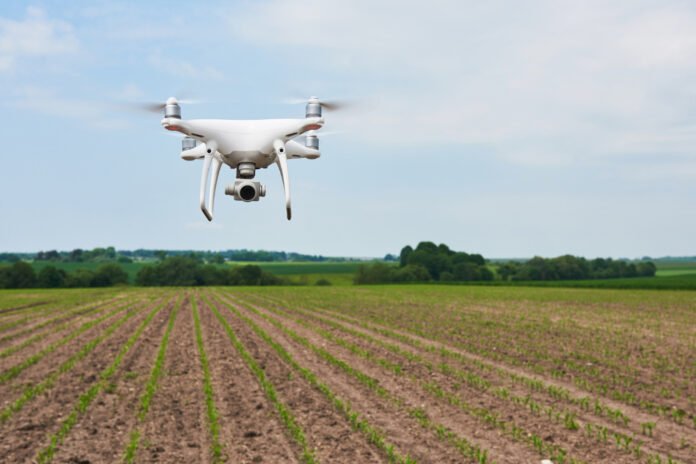In recent years, drones in agriculture have revolutionized farming, offering farmers a high-tech way to monitor and manage their crops. Companies like FEDS Drone-Powered Solutions are leading the charge, delivering specialized UAV technology and services tailored to the agricultural sector. These unmanned aerial vehicles (UAVs) provide unprecedented precision and efficiency, significantly improving crop yield, reducing costs, and optimizing resource use. As technology advances, understanding the benefits and best practices for drone use in agriculture can lead to smarter, more sustainable farming.
Benefits of Drones in Agriculture
Enhanced Crop Monitoring and Scouting
Drones allow farmers to monitor crop health in real time, capturing images that reveal variations in crop growth, plant health, and soil conditions. Through multispectral imaging, drones detect signs of disease, nutrient deficiencies, and water stress that are invisible to the naked eye. Early detection helps farmers address issues before they escalate, potentially saving vast amounts of crop yield and reducing the need for pesticides and fertilizers.
Precision Agriculture
Precision agriculture involves making data-driven decisions to improve crop yield and efficiency. Drones play a central role by mapping fields and collecting data on crop health and growth patterns. With GPS technology, farmers can use this information to apply water, fertilizer, and pesticides only where needed, minimizing waste and environmental impact. This targeted approach helps optimize resources, lowers costs, and reduces the carbon footprint of farming operations.
Soil and Field Analysis
Drones equipped with sensors can assess soil health and identify areas needing attention. By measuring soil properties like moisture content and texture, drones help farmers create better planting plans and manage irrigation systems more effectively. This capability is particularly valuable for larger farms, where consistent soil monitoring can be challenging. With drone-generated data, farmers can address specific areas of need, leading to better crop outcomes and resource conservation.
Improved Irrigation Management
Water conservation is critical in agriculture, and drones provide farmers with insights into irrigation needs by detecting variations in soil moisture levels. Thermal imaging cameras on drones help identify dry areas, allowing for precise irrigation. This precision reduces water waste and ensures crops receive adequate moisture, leading to healthier plants and higher yields.
Efficient Crop Spraying
Traditional crop spraying methods are time-consuming and can expose workers to chemicals. Drones can perform this task with much greater efficiency, flying over fields and spraying precisely where needed. This approach ensures even distribution, reduces pesticide usage, and minimizes exposure for workers. Additionally, drones can access hard-to-reach areas, making them invaluable for diverse terrains and crop types.
Best Practices for Using Drones in Agriculture
Understand Local Regulations
Before implementing drones, farmers must familiarize themselves with local regulations governing UAV usage. Many countries require licenses or permits, and staying compliant is essential to avoid fines or other legal issues. Farmers should also ensure that their drones meet all safety standards.
Invest in Training and Safety
While drones are user-friendly, operating them effectively requires skill and knowledge. Proper training ensures that farmers maximize the technology’s benefits while minimizing risks. Additionally, safety measures such as regular equipment maintenance and adhering to flight rules protect both the drone and the crops.
Integrate Data with Farm Management Systems
For optimal results, drone data should be integrated with other farm management systems. By combining drone insights with data from soil sensors, weather forecasts, and yield monitors, farmers can make informed decisions and improve overall farm productivity.
Plan Drone Flights Carefully
To capture high-quality data, plan drone flights based on weather conditions and crop cycles. Clear skies and moderate temperatures are ideal, as strong winds or rain can affect drone performance. Regularly scheduled flights at key growth stages allow for a comprehensive understanding of crop health and development.
Use the Right Equipment for Specific Needs
Drones vary widely in terms of capabilities, from basic models to advanced systems with multispectral cameras and thermal sensors. Investing in drones that match the farm’s specific requirements, whether for crop scouting, spraying, or soil analysis, ensures cost-effectiveness and maximizes the technology’s utility.
Also Read: Why Content Architecture Is Critical for Digital Marketing Success
Conclusion
The adoption of drones in agriculture has transformed farming, providing farmers with tools to improve efficiency, reduce costs, and support sustainable practices. By following best practices and making data-driven decisions, farmers can unlock the full potential of drone technology, paving the way for a more resilient and productive agricultural industry.

